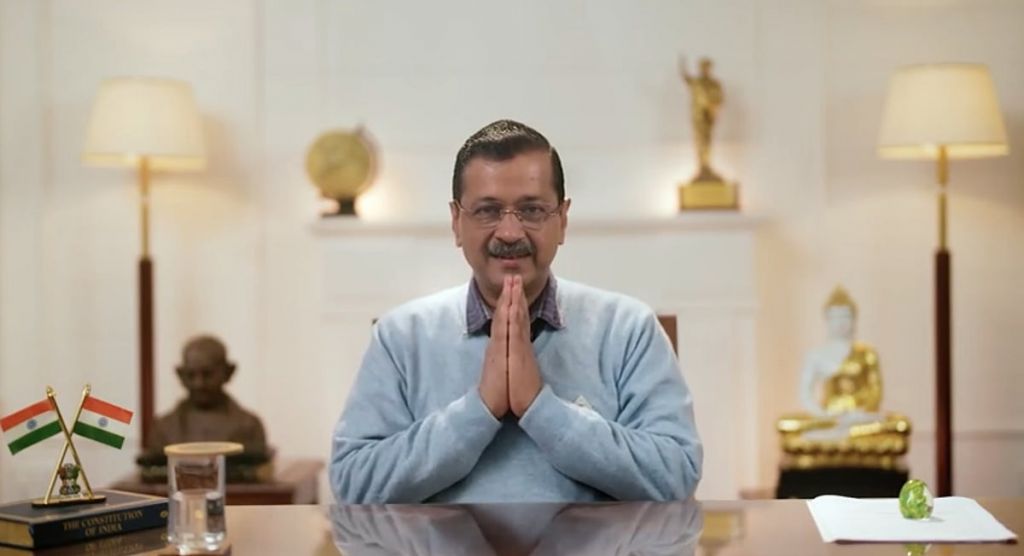
Arvind Kejriwal's political journey is a dramatic tale of ambition, disruption, and turbulence. From being an anti-corruption crusader to becoming Delhi’s Chief Minister and facing an existential crisis, his trajectory exemplifies both the power and pitfalls of disruptive politics in India.
The Meteoric Rise: An Outsider Revolutionizing Politics
Kejriwal burst onto the national scene through the India against Corruption (IAC) movement in 2011, alongside Anna Hazare. His demand for a Jan Lokpal Bill struck a chord with a disillusioned middle class fed up with systemic corruption. Unlike Hazare, Kejriwal saw electoral politics as the next step and, in 2012, founded the Aam Aadmi Party (AAP), positioning it as a transparent, corruption-free alternative to traditional political forces.
Defying expectations, AAP stunned the establishment in the 2013 Delhi Assembly elections, winning 28 of 70 seats and forming a minority government with Congress support. However, his abrupt resignation after 49 days—citing obstacles in passing the Jan Lokpal Bill—earned him the tag of being an anarchist. Despite this misstep, Kejriwal staged a sensational comeback in 2015, securing 67 of 70 seats in Delhi, reducing the BJP and Congress to irrelevance in the capital.
The Kejriwal Model: Governance and Expansion
Kejriwal's administration projected itself as a pro-people, welfarist model, focusing on free electricity, water subsidies, improved government schools, and mohalla clinics. These welfare schemes, along with efficient political messaging, won him a second term in 2020 with another landslide (62/70 seats). The AAP then sought national expansion, targeting Punjab, Gujarat, and other states, while challenging the BJP at multiple levels.
The Punjab win in 2022—AAP's first full-fledged state outside Delhi—was seen as a stepping stone to national politics. With Bhagwant Mann as CM, Kejriwal projected AAP as a formidable alternative to both BJP and Congress. However, his national aspirations began to face serious roadblocks.
Downfall Begins: Legal Troubles and Political Isolation
Kejriwal’s expansionist ambitions put him in direct confrontation with the BJP, which controls the central government. His party’s aggressive posturing led to escalating clashes with the Centre, including the 2021 Delhi riots, repeated run-ins with the Lieutenant Governor, and ED-CBI probes into alleged corruption.
The most damaging blow came with the Delhi liquor policy scam, which ensnared key AAP leaders, including Manish Sisodia and Satyendar Jain. The corruption allegations shattered AAP’s moral high ground and turned Kejriwal’s anti-corruption narrative on its head. Arrests of party functionaries further weakened the party’s credibility.
Simultaneously, the INDIA alliance, which Kejriwal had aligned with to counter BJP in 2024, began facing internal contradictions. AAP’s refusal to concede space to Congress in Delhi and Punjab strained relations, reducing Kejriwal’s negotiating power within the opposition bloc.
Additionally, AAP’s national expansion strategy failed to yield desired results. While the party made electoral forays into Gujarat, Goa, and Himachal Pradesh, its performance remained unimpressive. The party’s inability to penetrate large Hindi heartland states like Uttar Pradesh, Madhya Pradesh, and Rajasthan further dented its national ambitions. The BJP's stronghold remained intact, and the Congress, despite its decline, continued to be the principal opposition in many states.
The Battle against Central Agencies and Institutional Challenges
As Kejriwal’s governance came under scrutiny, his confrontations with central agencies escalated. The Enforcement Directorate (ED) and Central Bureau of Investigation (CBI) launched multiple probes against AAP leaders, leading to high-profile arrests. While Kejriwal decried these actions as politically motivated, the legal troubles deepened, impacting AAP’s governance and public perception.
The party also struggled with administrative control over Delhi. The ongoing tussle with the Lieutenant Governor (LG), seen as a proxy for the BJP-led Centre, hampered governance. Kejriwal’s demand for full statehood for Delhi remained unfulfilled, further limiting his executive power. The Supreme Court’s interventions provided temporary relief, but they could not completely shield AAP from central interference.
Public Perception and Media Scrutiny
Kejriwal’s carefully crafted image as an anti-corruption crusader took a significant hit due to these allegations. Media scrutiny intensified, and his former supporters from the middle class began to distance themselves. His reliance on populist schemes also faced criticism, with opponents arguing that AAP’s governance model was financially unsustainable.
While free electricity, water, and public healthcare schemes remained popular, critics questioned their long-term viability. The financial health of Punjab and Delhi governments came under pressure, raising concerns about AAP’s economic policies.
Political Future: Revival or Decline?
Kejriwal's future now hinges on multiple challenges. The corruption allegations, administrative tussles, and shrinking electoral footprint could either lead to his eventual decline or force him to recalibrate his politics. His leadership within AAP is unchallenged, but the party’s structural weaknesses—over-dependence on Delhi and Punjab—limit its national aspirations.
If Kejriwal can navigate legal troubles and reinvent his party’s positioning, he may yet remain relevant. However, with the BJP's aggressive crackdown and Congress’ resurgence, his space in Indian politics is shrinking. What began as an idealistic political movement now faces a credibility crisis, and Kejriwal’s ability to survive this storm will determine whether he remains a key player or fades into political oblivion.
Conclusion: A Defining Crossroad
Arvind Kejriwal’s journey has been marked by extraordinary highs and lows. From a grassroots activist to a three-time Delhi Chief Minister, his rise showcased the power of alternative politics. However, his confrontations with the Centre, internal party challenges, and legal troubles have significantly weakened his position.
Kejriwal now stands at a defining crossroads. If he successfully defends his governance model, navigates legal hurdles, and revives AAP’s expansion strategy, he may emerge stronger. Conversely, if he fails to counter mounting challenges, his political journey may enter a phase of irreversible decline.
Whether he will script another comeback or succumb to the pressures of mainstream politics remains an open question, but one thing is clear—his story is far from over.
(Writer is senior political analyst and strategic affairs columnist)